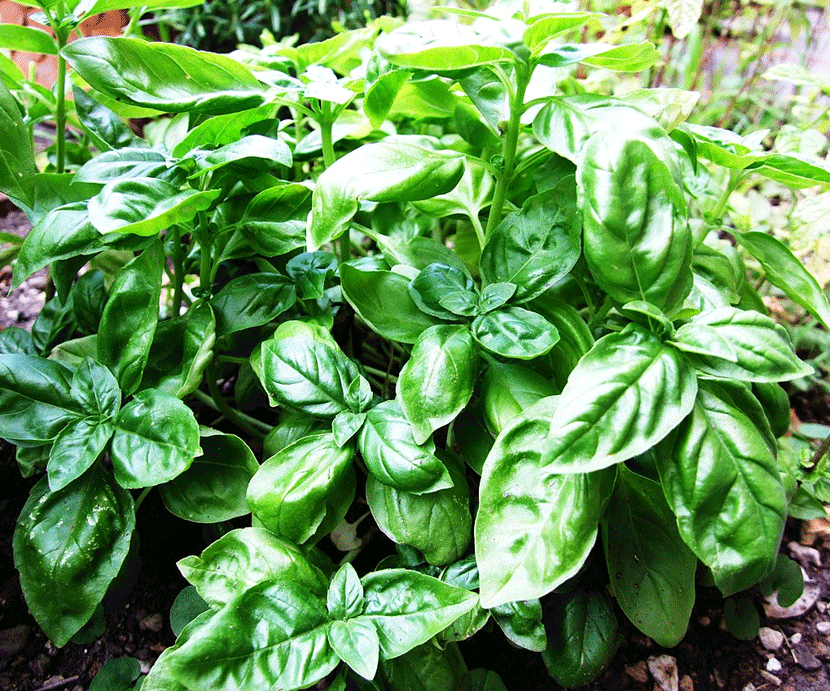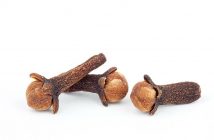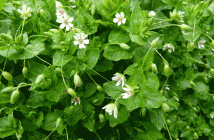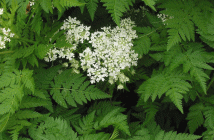 Basils, which belong to the Laminae, possess the square stems, two-lipped flowers, and profusion of fragrance-bearing oil glands typifying members of the mint family. Three compounds are primarily responsible for its pungent scent: Molina, methyl clavichord, and Eugenio. The relative proportion of these compounds varies between species-and hybridization introduced by individual growers¬resulting in differences in scent (pronounced accents include anise, clove, cinnamon, and lemon). The more popular varieties include
Basils, which belong to the Laminae, possess the square stems, two-lipped flowers, and profusion of fragrance-bearing oil glands typifying members of the mint family. Three compounds are primarily responsible for its pungent scent: Molina, methyl clavichord, and Eugenio. The relative proportion of these compounds varies between species-and hybridization introduced by individual growers¬resulting in differences in scent (pronounced accents include anise, clove, cinnamon, and lemon). The more popular varieties include
• Optimum ‘African Blue’ -reaches three feet in height, possessing purple-tinged green leaves with purple undersides and six¬inch lavender flower spikes.
• Ocimum basilicum ‘Cinnamon’ -three feet tall with a purplish stem, green leaves, and lavender flower spikes. Notable for its spicy cinnamon flavor.
• Ocimum basilicum ‘Genovese Verde Migliorato’ -thirty-six inches in height, green, puckered leaves, white flowers.
• Optimum basilica ‘Thai Purple’ -two feet tall, possessing lavender flowers, purple-tinged stem, and long green leaves mottled with purple. Anise-flavored.
• Ocimum basilicum ‘Dark Opal’-two feet in length with large leaves, toothed margins, and whitish-pink flowers. Besides be¬ing used for pesto as is the Genovese strain, it makes a highly prized vinegar.
• Optimum periodicity ‘Lemon’-thirty inches tall with light green leaves and small white flowers.
The name Optimum basilica is derived from the Greek kimono, meaning smell, and basilisks, for king.
Native to Africa, Asia, the Caribbean, the Middle East, and South America, basil was imported into Europe approximately 2,000 years ago. In prescribing it for headaches, Dioscorides (b. 40 A.D.) warned against eating large quantities “as it dulleth the eyesight, breedeth wind, provoketh urine, drieth up milk and is difficult to digest.” Pliny classified it as an aphrodisiac; it was fed to horses and donkeys during mating sea¬son. Early physicians considered it an antidote to melancholy. For centu¬ries, basil was considered an effective remedy to inflammations of the body as well as scorpion bites. The Virginia Gazette carried advertise¬ments regarding its medicinal benefits as early as 1775.
Whereas the Greeks equated basil with hatred, it symbolized love in Italy; Italian women wore a sprig of the plant to engender sympa¬thy. It was also an established part of the courtship ritual in Romania.
The plant has long had religious as well as supernatural associa¬tions. Basil was considered a sacred herb among the Hindus and other religious sects of India. It is said to have grown around the base of Christ’s tomb. Historical accounts have been split, regarding it as ei¬ther sacred or evil. John Gerard, in his Herball; or, Generall Historie of Plantes (1597), advised readers against taking the herb internally.
Basil has enjoyed immense popularity in the present day as a fla¬vor enhancement to meat, pasta, seafood, soups, eggs, and salads. It is perhaps most widely known as the central ingredient in pesto sauce. This delicacy originated in Italy; localities there have created their own variations in flavor.
Basil has been found to possess antimicrobial properties, leading to its use in medicinal products such as mouthwash. It is also an in¬gredient in certain perfumes and natural insecticides.
The culinary basil are cultivated as annuals in much of Canada and the United States; they are perennial, however, in the warmer climates where they originated. The plant requires at least several hours
of full sun daily and an abundance of water. It is susceptible to fungal diseases Samarium Bosporus and Erwin, both of which cause sudden wilting and brown streaking on the stem (as well as leaf spotting in the latter case).
The best flavor is derived from fresh basil. Picked plants can be preserved for at least a week by placing the stems in water and refrig¬erating with a plastic cover. Long-term preservation can be achieved through a number of methods:
• Drying by bundling stems together with a twist tie and hanging them in a shady setting possessing good air circulation
• Chopping up leaves and freezing them in oil in ice cube trays
• Freezing leaves individually on a cookie sheet prior to packing them in a plastic container



